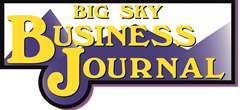The Internal Revenue Service (IRS) recently announced a delay to the reporting requirement threshold for transactions on payment platforms including Venmo, PayPal, and Airbnb. The delay will keep a $20,000 transaction threshold for 2023 and introduce a new significantly lower threshold phased-in starting in 2024. Despite the delay, this new rule will add to the harmful tax-related paperwork burden for small businesses and increase government overreach.
After the phase-in year, the mandate will require payment platforms to send a Form 1099-K to the IRS and users if their transactions total more than $600 for the year. The new requirement raises concerns that the IRS will not be able to differentiate between money received as payment for work and money that was received to split the costs of goods or services, creating confusion.
“For example, if you buy concert tickets and your friend sends you money electronically to pay for theirs, the IRS may treat this as income to you and tax it,” explained NFIB President Brad Close. “Multiply this by tens of millions of transactions, and you can see the magnitude of the problem facing small businesses. Small businesses expect the additional confusion and lower threshold will add to their already harmful paperwork burden and increase government overreach.”
The IRS does not have the authority to pick the threshold – only Congress has the authority to remove or change the 1099-K reporting threshold. While the ‘transition year’ $5,000 threshold temporarily relieves an unnecessary reporting burden and confusion for some, what small businesses need is for Congress to provide a complete fix by removing the new $600 threshold rule that will start in 2025.
In March 2021, the American Rescue Plan implemented this $600 threshold. For the 2023 tax year, the IRS will require payment platforms to generate 1099-K forms using the longstanding threshold of $20,000. Small businesses receiving 2023 1099-K forms from these platforms will see them in the mail or electronically in early 2024, similar to the tax-related forms received from banks regarding savings accounts.
For the 2024 tax year, the IRS will require these platforms to generate 1099-K forms at a threshold of $5,000 in transactions. Based on the November 2023 IRS announcement, in early 2025, every small business that has more than $5,000 in transactions on platforms like PayPal, Venmo, and others, will start receiving 1099-K tax forms for additional tax liabilities.
NFIB is calling on Congress to remove the new, lower threshold and return to the longstanding $20,000 threshold for 1099-K reporting and will continue to advocate for a repeal.



